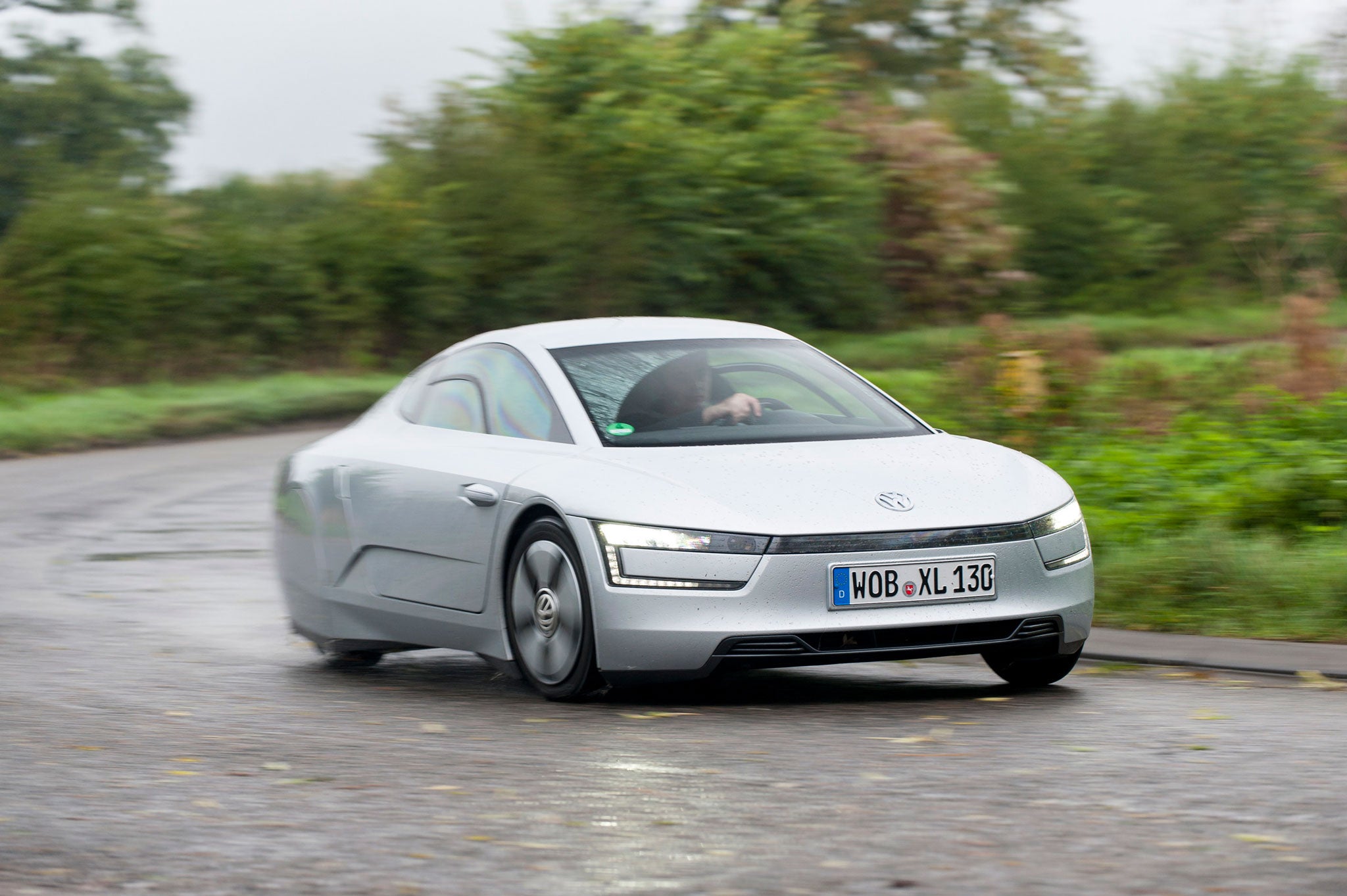Just around the corner: In the near future we could all be doing 313 miles per gallon

Cue spacy sci-fi soundtrack. The scene is a city suburb, the time not yet reached but within conceptual grasp. Straight dual carriageways laid out in a grid, linked by roundabouts and oddly free of restrictive speed limits, mark out some planner's vision of a car-dependent utopia.
A silver, pod-like, individual-transport module appears in the distance on the far carriageway, shaped something like an old-fashioned car but smaller, lower, narrower, sleeker. We, too, are in a similar silver pod and our view aft is via a pair of high-resolution, iPhone-like screens set just below the forward edges of the side windows. Rear-facing cameras just above and behind the front wheels capture the images with surprising clarity.
So, where are we? Milton Keynes, probably the closest Britain currently has to a future city and the home of Volkswagen's UK importer. And what are we in? A VW XL1, the most economical car there has ever been, despite a 99mph top speed and an ability to nudge 62mph (the 100km/h metric benchmark) in 12.7 seconds. It's a real car, albeit a cosy one with two seats. And you can, maybe, buy one.
This XL1 is no concept car, but it does represent a very serious research and development project for Volkswagen. An initial batch of 50 is already roaming the roads, and 200 more are to be built of which the British importer is hoping to offer 20 or 30. The price of early adoption is high, at around £94,000. So, what would you be adopting?
Something as state of the art as a car, currently, can reasonably be. It's a plug-in hybrid, of course; that's a future-facing must-have. Its structure is made of carbonfibre injected with resin at high pressure in a mould, one reason why it weighs just 795kg, while the front tyres are as skinny as a Citroën 2CV's, helping its slippery aerodynamics.
The engine is mounted behind the cabin, in unit with the electric motor and the seven-speed, double-clutch gearbox, which can work only in XL1-knows-best automatic mode. You might expect the engine to be a rough, vibratory thing given that it's an 800cc turbodiesel with just two cylinders, but a balancer shaft keeps the 48bhp flowing with decorum. The electric motor provides a further 27bhp, enough to zoom the XL1 for up to 31 miles on its own if the battery is fully charged. The motor can also add to the diesel's efforts when you want to accelerate hard, the combined outputs touching 69bhp.
Now, the vital numbers. On the official tests, the XL1 scores a scarcely believable 313mpg with a 21g/km CO2 output. Just think: if all cars could do that… But can it do so and still feel like a credible car?
The lightweight doors with their polycarbonate windows open upwards and forwards. I settle into the driving seat and pull the door closed, taking in a dashboard made from lightweight, plastic-covered wood fibre and a set of pure, simple instruments and switches. Some are recognisable from other Volkswagens, apart from those indicating electricity consumption and reserves. I press the start button and, noiselessly, we're ready.
We swish on to the road, various harmonic whines indicating electric activity aft; the engine joins in without the merest jerk as we accelerate harder. At cruising speeds, the engine runs very slowly but there's still plenty of acceleration available, and no wind rush at all. Despite the lack of power steering, unnecessary in a light car with narrow front tyres, the XL1 feels light, crisp and responsive when a roundabout inevitably arrives. It's fun to drive in the way a small, light car should be.
That sci-fi future is clearly sliding towards us. If this (price apart) is how small cars will be, then it can't come a second too soon.
Join our commenting forum
Join thought-provoking conversations, follow other Independent readers and see their replies
Comments
Bookmark popover
Removed from bookmarks